Vered Neta's Blog, page 13
July 15, 2014
Habits of Successful Partnerships
 Yesterday was my birthday! I’m proud to celebrate my birthday. I know that with the years I don’t get older I become… wiser
Yesterday was my birthday! I’m proud to celebrate my birthday. I know that with the years I don’t get older I become… wiser
I want to thank those of you, who have sent me blessings and congratulations.
Please accept my apologies for not responding to your blessing… I’m somewhere in the rainforest of Madagascar visiting one of the villages we’ve helped bringing light through our Open Circles Foundation.
Talking about becoming wiser, many of you have asked me many times what is it Nisandeh and I do that allow us to be so successful and happy in our relationship even though we work, live and run our business together, which means we are practically 24 hours together.
 My answer … having successful habits.
My answer … having successful habits.
Creating a balanced life means that you need habits that would help you both in your business and in your private relationship. Those habits you develop that can help you build a successful business would probably, if you check it carefully, would help you in creating a loving and successful relationship.
Living and working in the same business with Nisandeh, my husband, for the last 21 years has forced us to find ways to make sure that our relationship will stay alive and growing.
Many of those habits are great ones to implement even when you think about your business partners (with some modifications…)
Here are our 5 top habits to keep your relationship alive:
Habit #1 – Make Each Other Happy
Your goal in the relationship is creating happiness, not pain. Simple, isn’t it?
However… for just a single day, become consciously aware of everything you do, by asking yourself the question, “Is what I’m about to do or say going to cause my partner pain or happiness?”
To help you, each of you should make two lists: one for all the things your partner does that hurt you, and another for all that you’d like your partner to do to make you happy. Swap lists, and now you know exactly what to do and what not to do. No more guessing!
 Habit #2 – Create Love and Friendship Rituals
Habit #2 – Create Love and Friendship Rituals
You fall in love through rituals of connection and intimacy such as romantic dinners, long conversations, riding bicycles or going for walks, exchanging gifts, talking every night on the telephone…
When you fall in love your relationship becomes the center point of your life, with anything else becoming secondary. Over time, when the relationship becomes more settled (particularly after you have children), this process reverses. The children, your work, your hobbies, your friends – take the center stage and the relationship being downgraded to the background tending only to receive your attention in times of crisis.
The remedy to routine (the main cause of dull relationships) is connection and intimacy rituals.
For example, every Saturday evening, as a changeover from the working week into the weekend, take two hours together when you put a “do not disturb” sign on your busy life. No phones, no answered doors, no e-mails, no TV, nothing… Just the two of you
Do what you will with the time; however it must be an investment in your relationship.
 Habit #3 – Create a Safe Space for Open and Honest Sharing
Habit #3 – Create a Safe Space for Open and Honest Sharing
Create a sense of safety and acceptance that allows each of you to express your feelings, problems, expectations and disappointments.
One of our connection rituals is a process called “Clearing” that creates this atmosphere of safety and acceptance.
Every night before we go to sleep, we ask each other “what DID NOT work for you today?” We give each other a chance to share about all the things that went “wrong” during the day (whether connected to the relationship or not). If there are any solutions that we can mutually agree upon to assist with improvements for the future, we raise the issue.
When both of us are complete, we initiate a second round, in which we ask each other “what DID work for you today?”
This is our opportunity to share about all the goodness that we’ve experienced during the day, as well as acknowledge each other (and others) for the support and love we’ve received.
Habit #4 – Work Together to Resolve Conflict and Crisis
The problem with the way most couples argue is that they attempt to find solutions before allowing each other the chance to say what they need to say.
The “Council” process ensures that before you engage in solution talk, each one of you feels you have been fully heard.
Here’s how it can be made to work in the practice: One person holds an object in their hand, called the “Talking Piece”, which symbolizes that he or she has the floor. While one person has the floor, the other person is allowed only to listen without interruption.
When speaking, you should focus on speaking from your heart (emotional, spontaneous, and instinctive as opposed to mental). When listening, you are encouraged to listen from your heart (ie from acceptance and compassion).
Only after each person has been fully “heard,” (in case it is still necessary) continue through to the process of problem solving.
 Habit #5 – Create Meaning In Your Relationship
Habit #5 – Create Meaning In Your Relationship
Think about it, besides having fun, what would you like to do together in the coming 40 years?
We all need meaning in our lives. You will enrich your relationship by sharing meaningful experiences with each other. The ultimate in meaning is to share a common philosophy of life and life purpose.
This is why couples who choose a path of personal-growth or spirituality together, have great source of meaning in their lives. They are able to live on purpose.
Now I’m curious…
What habits you would adopt to make your relationships happier and successful?
Share it with us in the comment box below - What tips, suggestions and experience you have in creating successful relationships/partnerships
If you find this article inspiring, please SHARE it on Facebook, LinkedIn or retweet it, by pushing the button on the left, for the right channel, so more women could benefit from it.
Please share this article with your:
- LinkedIn connections
and blog readers...
Have a magical week! Vered
July 8, 2014
How to Have a Business After the summer Vacation
 Summer is everywhere and everyone is away on vacation.
Summer is everywhere and everyone is away on vacation.
For years the concept of taking a vacation was like the “Loch Ness” monster concept for me. I knew it existed but I couldn’t see it taking place.
I was too busy in my business and I kept telling myself I couldn’t afford taking a vacation. Until I realized how crucial and important it is to take a vacation.
If you are a bit like I used to be, you might think that slowing down and taking a vacation would be a GREAT time to finally work ON you business, then you still don’t get the value and importance of taking a vacation.
You need to realize that when you don’t take time off you’ll get to a burnout.
Living a balanced business life means that you HAVE to take some time off to allow your brain and mind the relaxation in order for creativity to show up.
 Vacations can be a source of inspiration for start-up ideas, inventions, corporate programs, or even a company name.
Vacations can be a source of inspiration for start-up ideas, inventions, corporate programs, or even a company name.
I know that my best products and services were developed while I was on vacation and I could take a distance from the daily business and realize what is it that my clients are looking for.
The problem is that, if you are anything like me, the days before leaving on vacation are usually the most hectic ones and the main question that I had for many years was – what would come first the flight or finishing everything that had to be done?
The question is how do you go on a vacation and still have your business running?
So here are some tips how to do it:
 Let go of Control
Let go of Control
A difficult aspect of business ownership is the ability to let go of control. Taking a vacation is the perfect opportunity to test the abilities of your team to handle the ship.
Have your team make a list of top priorities they’re taking accountability for – before you leave.
For me that was (sometimes still is) the biggest lesson. But I learned from experience – the more I delegate, the faster my business grows.
To Call or Not to Call
Before leaving, determine whether you’ll take the approach of no contact (unless there is an emergency) or call in occasionally.
 If you really can’t get your business out of your mind while on the beach, a 10-minute debriefing with your team can help calm your fears.
If you really can’t get your business out of your mind while on the beach, a 10-minute debriefing with your team can help calm your fears.
Personally, I make it clear to my team that I’m available IF they need me, but I rarely initiate contact. They also know that I love to get a short SMS message telling me the status of important projects.
Have a Backup Plan
The best way to have peace of mind while on vacation is to have a contingency plan ready in case of emergency.
For small business owners with employees, provide your team with the when and why to contact you in case of emergency.
For self-employed, make arrangements with other trusted peers to deal with any of your client’s emergencies.
 Get Organized
Get Organized
To avoid this situation, get organized well in advance of your vacation. Make a list of all the things that absolutely must be done before you go. Prioritize the list so that when time runs out – and it will – at least you took care of the important things.
For example, I’m writing this blog post weeks before leaving for 3 weeks in the Amazon and Galapagos islands.
While you’re reading it, I’m probably either zapping on the top of the rainforest or diving with seals or watching giant turtles or just enjoying a leisurely day on the beach.
The bottom line: The more details you take care of before you go, the less you’ll worry while you’re away.
And now it’s your turn…
Do you have any tips how to handle your business while you’re on vacation?
Share it with us in the comment box below - your experience and tips for making things better and perfect
As a thank-you gift I will send you a video from my seminar of Women Do Business Differently
If you find this article inspiring, please SHARE it on Facebook, LinkedIn or retweet it, by pushing the button on the left, for the right channel, so more women could benefit from it.
Please share this article with your:
Have a magical life, Vered
July 1, 2014
The 2 Crucial Questions
 You probably know by now that in order to be successful in your business you need to truly know what your target audience is thinking and how they behave.
You probably know by now that in order to be successful in your business you need to truly know what your target audience is thinking and how they behave.
You need to understand their fears and frustration and also know what are their dreams and goals.
This is crucial when it comes to communicating with your target audience. In todays’ overload of information, the only reason your prospects would listen to you, or grab their attention, is when you are able to communicate directly to what appeals to them.
Now, I’m not a copywriter, or even an expert writer. The truth be told, I had to overcome many non-supportive beliefs I had about my writing skills in order to reach the level of writing I have today. The reason I’m saying it is to show you, that if I was able to become better in doing it, so can you.
When it comes to writing marketing material many of you probably have heard that you’ll need to focus on benefits, features, detailed description and all types of techno jargon.
However, I’ve found during the years of my trial and error in this field, that you’ll need to focus only on two crucial questions. Those are the ONLY two questions that really matter when you are sitting to write marketing material.
Would you like to know what they are? I can hear you all saying… DAHHH…
So here it comes…
Question #1
 What are your prospects and clients saying to themselves as they consider purchasing your type of product of service?
What are your prospects and clients saying to themselves as they consider purchasing your type of product of service?
Think what would be the actual words they think in their head. Visualize the cartoon bubble floating above them what would it say?
Most likely it will not be saying “Oh, I wish I had this magical wonderful new xyz gadget version 2.3.
No, most likely they would be saying something like “I wish I had more time off, or why am I always stressed out when I actually love what I’m doing”
You need to get into their head and discover what is the inner conversation that they have in their head and use it in your marketing material.
I’ve discovered during the years that my prospects are asking themselves something along the lines of “Why is it that this business talk is so complicated, I wish someone could have explained it to me in simple language that I can understand what I should do”
So I might focus my blog posts and my workshops and webinars on how to simplify marketing, business and social media and most of all simplifying life to a place that you could feel you are living a life of balance and not constant stress.
What would be your target audience inner conversation?
 Question #2
Question #2
What would they like to say to themselves if they actually got the result they are seeking?
If the first question was about what frustrates your target audience, what are their obstacles and fears, this one is all about what are they dreaming for? What inspires them? What would success look like for them?
I’ve discovered that my audience would like to say “Oh, that’s what it is about? Why didn’t they say it before, now I know what to do and what are my next steps, this looks doable to me”
Therefore I need to explain certain concepts and strategies in words that are clear to my target audience and talk to them in their own language. I need to paint for them a picture of how their world could be simple and what are the first steps that they need to take in order to reach that picture.
That’s it!
 That’s all you need to focus on, when you want to write great marketing material. Now all that mystery around copywriting , sales letters, sales copy etc.. is gone.
That’s all you need to focus on, when you want to write great marketing material. Now all that mystery around copywriting , sales letters, sales copy etc.. is gone.
You need to a find a way to discover, unlock and communicate the answers to these two questions in your marketing and sales materials and that would make the difference between your audience just reading it (or worse ignoring it) and actually buying from you.
Now I’m curious…
What would your target audience inner communication be?
Share it with us in the comment box below - What tips, suggestions and experience you have in how to find out what is their inner communication
If you find this article inspiring, please SHARE it on Facebook, LinkedIn or retweet it, by pushing the button on the left, for the right channel, so more women could benefit from it.
Please share this article with your:
- LinkedIn connections
and blog readers...
Have a magical week! Vered
June 24, 2014
How to Slay The Procrastination Dragon
 These days I’m working on preparing all my Blog posts for the summer. I would like to be able to enjoy my summer vacation, without stressing about my Blog posts, newsletters, social media etc… (more about it in a few weeks… stay tune to that Blog post…)
These days I’m working on preparing all my Blog posts for the summer. I would like to be able to enjoy my summer vacation, without stressing about my Blog posts, newsletters, social media etc… (more about it in a few weeks… stay tune to that Blog post…)
However, although I knew I had to write THIS Blog post about 2 days ago, somehow, each time I was determined to sit down and write it, I told myself I must put another laundry load before I start.
Then it was that little voice that told me that it would be better to do my 20 minutes daily exercises before I start with my writing.
When I finally sat down I was really hungry so I made myself lunch, but then I realized that the fridge was empty, so I went to do the shopping.
By the time I came back home it was so late in the afternoon and I knew I’m not creative in the afternoon, so I decided I better write this Blog post tomorrow morning, first thing, I promised myself.
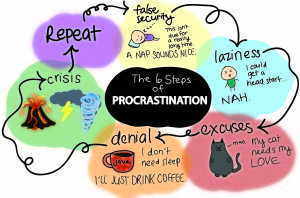 Next day somehow the whole cycle started all over again.
Next day somehow the whole cycle started all over again.
Does that sound familiar to you? It’s called – PROCRASTINATION.
When I grew up we didn’t have that word, I don’t think I ever heard this word before I was in my ’30. We used to call this type of behavior…. Being lazy!
However, together with the age of information and interruption we entered a time where procrastinating has become an epidemic which is sabotaging your productivity.
The younger generation is all about procrastinating. They are even making videos and musicals about it. They are aware that they are procrastinating but have no clue how to fight it.
Have a look at the Procrastination – The Musical, which my daughter introduced me to (after finishing reading this Blog Post – ha, ha, ha…)
Any change needs to start with awareness. We need to become aware of our habits and patterns if we wish to change them.
Your level of success will always be depended on your ability to be productive, but if you are suffering from procrastination your productivity will always suffer and the quality of your work will diminish, as you will be doing it at the last moment and under pressure.
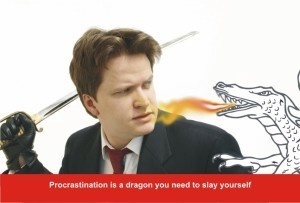 Those of you who are Type A personality, which means, that you enjoy stress and deadlines procrastination might sound as if it helps you, however, research has shown that even Type A people are not performing at their best when they are subject to procrastinating behaviors. They tend to produce unpredictable quality work that lowers their success.
Those of you who are Type A personality, which means, that you enjoy stress and deadlines procrastination might sound as if it helps you, however, research has shown that even Type A people are not performing at their best when they are subject to procrastinating behaviors. They tend to produce unpredictable quality work that lowers their success.
Procrastination is the proof of fear of success. Therefore you need to realize that procrastination is a dragon that you have to slay yourself – for yourself.
You need to become familiar with it and turn it around so it would become your friend and ally in becoming more productive.
Here are tips on how to direct your inner procrastinator to your advantage:
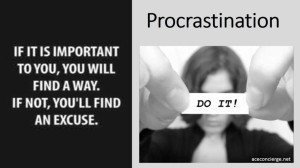 Flip your daily to-do list.
Flip your daily to-do list.
You wake up and list the 6 important things you need to do today. According to the 20/80 rule, odds are, one item is worth 10 times more than the rest.
Our natural human tendency is to put it off until later, diverting into mundane tasks like Facebook. We invent devilishly clever reasons not to get that one thing done.
Once you realize which is that one you are dreading to start with – dive in and… DO IT!
The ‘procrastination dragon opportunity detector’ works for big-picture projects, too.
If you’re all-consumed with €10 per hour busy work, you have no time to stop and ask yourself, “What should I launch next week that will double my income this year?”
That question challenges you and confronts you. The more disturbing it is, the better. It challenges the status quo.
Whatever answer come up if it gives you that sick feeling – that’s the plan that probably belongs on the top of the stack.
 Delegate the manual work to others.
Delegate the manual work to others.
You’ve probably heard me say it before, I urge women entrepreneurs to hire house cleaners and personal assistants to free yourself from mundane activities.
What do you do with the extra two hours a day you free up? You could waste it away – or focus ON your business and do some strategic work.
Perfectionist? – Get over it!
You might tend to relax your anxieties and stay mediocre by perfecting things that don’t need to be perfect at all.
You spend 15 minutes editing that email before you press send. You clean out your car twice a week.
Most procrastination isn’t doing nothing, it’s doing what’s comfortable and mediocre.
Now I’m curious…
What is your favorite procrastination method?
Share it with us in the comment box below - What tips, suggestions and experience you have in breaking through procrastination?
If you find this article inspiring, please SHARE it on Facebook, LinkedIn or retweet it, by pushing the button on the left, for the right channel, so more women could benefit from it.
Please share this article with your:
- LinkedIn connections
and blog readers...
Have a magical week! Vered
June 17, 2014
The Trouble with Goals
 I’ve been teaching setting goals for over 25 years. When I teaching it was hard work to coach business owners to set up goals for their marketing, sales, employees and products.
I’ve been teaching setting goals for over 25 years. When I teaching it was hard work to coach business owners to set up goals for their marketing, sales, employees and products.
They got the principle but were afraid to set up a goal that they might not reach, especially when I was pushing them to dream BIG.
It became even harder when I was asking them to set goals for happiness in life and measure what will be a successful LIFE for them beyond their business.
Today no one even raises an eyebrow when I ask to set goals, it is the most acceptable practice in business and in life.
By now, you probably know, that if you wish to be successful in life and business you need to set goals that would define for you, what success or happiness will mean.
 However, as I went through the years I came to realize that the issue is not setting goals, but it is attaining goals. It is how to reach those goals that we set, that makes most people resist setting goals.
However, as I went through the years I came to realize that the issue is not setting goals, but it is attaining goals. It is how to reach those goals that we set, that makes most people resist setting goals.
About 12 years ago Nisandeh (my partner) and I wrote and created the book and program “Elements of Success” (“Leef Lekker” in Dutch) that teaches you how to create your own reality and how to achieve those goals you set up. In the book we teach you the 5 steps of creating success and how to do it in a balanced way.
As you can probably understand I’m a big advocator for goals. However after working with more than 120,000 people all over the world and teaching goals for more than 25 years I’ve been rethinking this whole concept and asking myself a question that I never thought I would ask.
I started to question do we really need to focus on setting goals?
What I’m starting to realize, is that when it comes to actually getting things done and making progress in the areas that are important to you, there is a much better way to do things. It all comes down to the difference between goals and systems.
Let me explain.
The Difference Between Goals and Systems
What’s the difference between goals and systems?
If you’re a coach, your goal is to win a championship. Your system is what your team does at practice each day.
If you’re a writer, your goal is to write a book. Your system is the writing schedule that you follow each week.
If you’re a runner, your goal is to run a marathon. Your system is your training schedule for the month.
If you’re an entrepreneur, your goal is to build a successful business. Your system is your sales and marketing process.
Now for the really interesting question:
If you let go of your goals and focused only on your system, would you still get results?
 For example, if you were a runner and you wanted to run the marathon and you would let go of the goal of running a marathon and focused on the weekly and daily practice of running, would you be able after a year to run a marathon?
For example, if you were a runner and you wanted to run the marathon and you would let go of the goal of running a marathon and focused on the weekly and daily practice of running, would you be able after a year to run a marathon?
I think you would.
Which means that once we focus on the system we can reach both the goal and at the same time develop habits that would stick with us beyond just that specific goal.
Here are 3 more reason why you should focus on the systems and not the goals
1. Goals reduce your happiness.
Choosing a goal puts a huge burden on your shoulders. If you are not a professional writer telling yourself “my goal is to write a book this year”, your minds, will immediately go – “no way would you be able to pull it”
However if you only stick to writing twice a week a blog post of around 700-800 words at the end of the year you would have written 78,000 words. The typical book is about 50,000 to 60,000, which means that you’ve written more than a book!
Setting goals that way is creating unnecessary stress on you. Setting goals of losing that weight or to succeed in business or to write a best-selling novel.
Instead, you can keep things simple and reduce stress by focusing on the daily process and sticking to your schedule, rather than worrying about the big, life-changing goals.
When you focus on the practice instead of the performance, you can enjoy the present moment and improve at the same time.
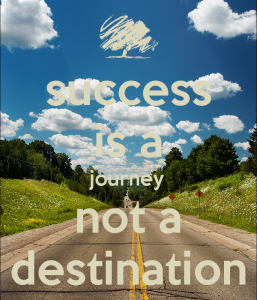 SOLUTION: Commit to a process, not a goal. It’s about the journey not the destination!
SOLUTION: Commit to a process, not a goal. It’s about the journey not the destination!
2. Goals have the habit of being a one-time thing and not a long-term progress.
You might think your goal will keep you motivated over the long-term, but that’s not always true.
Goals have this tendency to push you only until that moment you reach it and after that most of you tell yourself, now I need a break.
This creates a type of “yo-yo effect” where you go back and forth from working on a goal to not working on one. This type of cycle makes it difficult to build upon your progress for the long-term.
SOLUTION: Release the need for immediate results. Focus on the system to reach those goals.
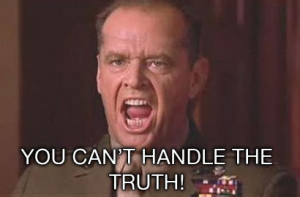 3. Goals suggest that you can control things that you have no control over.
3. Goals suggest that you can control things that you have no control over.
You can’t predict the future. (I know, it’s shocking. Isn’ it)
But every time you set a goal, you try to do it. You try to plan out where you will be and when you will make it there.
You try to predict how quickly you can make progress, even though you have no idea what circumstances or situations will arise along the way.
SOLUTION: Create a feedback system and listen to it on a regular basis
Feedback systems are important for building good systems because they allow you to keep track of many different pieces without feeling the pressure to predict what is going to happen with everything.
Forget about predicting the future and build a system that can signal when you need to make adjustments.
None of this is to say that goals are useless. However, I’ve found that goals are good for planning your progress and systems are good for actually making progress.
Goals can provide direction and even push you forward in the short-term, but eventually a well-designed system will always win.
Having a system is what matters. Committing to the process is what makes the difference.
Now I’m curious…
What would be your system to replace the goals you have set up?
Share it with us in the comment box below - What tips, suggestions and experience you discovered that helps you in reaching your goals
If you find this article inspiring, please SHARE it on Facebook, LinkedIn or retweet it, by pushing the button on the left, for the right channel, so more women could benefit from it.
Please share this article with your:
- LinkedIn connections
and blog readers...
Have a magical week! Vered
June 10, 2014
3-Steps Dance in Creating Remarkable Content
 Have you ever had that experience of reading a piece of content, or seeing a video, or listening to a speech that just made you so moved?
Have you ever had that experience of reading a piece of content, or seeing a video, or listening to a speech that just made you so moved?
I’m sure you had that experience.
It’s that blog post, article, video, or speech that changes you.
It touches you. You are so affected by its message you can’t help but sharing it.
We’ve all experienced content like this.
Wouldn’t you wish it was YOUR content that people would feel the need to share it?
But do you know how to create it? That’s the question.
Creating consistently remarkable content over time is what it’s all about.
You’re aiming to create content that makes people pay attention, think and feel.
I believe that creating a remarkable content is like dancing.
You just have to know the steps!
And as content creator, if you keep those dance steps in mind, you can craft an experience that will have a profound effect on your readers.
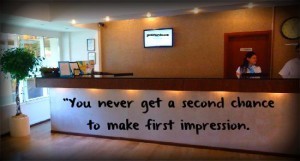 First Step – It’s all About the Look
First Step – It’s all About the Look
You know that phrase of “You don’t have a second chance for first impression”?
It’s also true for your content.
The content “dance-steps” starts with the eyes. By this, I mean that it all starts with your design. Your reader sees the overall presentation of your information before they read a single word.
This means using colors, fonts, formatting, and visuals to attract them to begin engaging with your content.
Good design has a promise. It sends the message of, “I’m on your side, and I’ve got your best interests in mind. The information here is easy to read, and it can be trusted. Proceed with confidence.”
 The best design is the … SIMPLE one. Don’t fall into the story graphic designers tell you… stick to K.I.S.S. – Keep It Simple Sweetheart!
The best design is the … SIMPLE one. Don’t fall into the story graphic designers tell you… stick to K.I.S.S. – Keep It Simple Sweetheart!
If you get your design right, your readers will move on to the next step in the dance, and they’ll begin to read.
If you get it wrong, the dance will end right there. They’ll click away, or turn the page.
So start with good impression.
Second Step – Capture their Mind
The second step of the dance involves the content itself: the information you’re presenting.
For best results, your content should be engaging and presented in a way that’s easy to understand.
Spend time working on a headline that draws your reader in. Write subheads that guide them through your text like signposts. Break up your copy with bulleted lists.Incorporate images that engage the viewer and add to the meaning of your words.
Attention to both your content and the way you break it down, polish it up, and present it will help your words take a direct path to your readers’ minds.
And that’s the midway point. Next step? The heart.
 Third Step – Capture their heart
Third Step – Capture their heart
The most remarkable content presents information in a way that touches emotions. The best way to do it is through stories.
Stories that emphasize common human experiences and emotions are the ones you remember.
We all know what it feels like when there aren’t enough hours in a day to do what we want to do. We’ve all felt insecure from time to time. And we’ve all had the experience of working hard and achieving a long-term goal.
When you incorporate stories that knit together experiences we’ve all had, your content will go straight from the eyes, to the mind, to the heart. And it will stay there, and be remembered.
 Content that lands on the heart is content that gets shared. It gets people talking. It’s the definition of remarkable.
Content that lands on the heart is content that gets shared. It gets people talking. It’s the definition of remarkable.
Remarkable content takes your readers to the dance floor where they experience the joy, the excitement and their own energy rising up.
Now I’m curious…
What steps do you need to improve to create your remarkable content?
Share it with us in the comment box below – What tips, suggestions and experience you have in creating remarkable content?
As a thank-you gift I will send you a special invitation to my next webinar called “How to Create Your Own Unique Message”
If you find this article inspiring, please SHARE it on Facebook, LinkedIn or retweet it, by pushing the button on the left, for the right channel, so more women could benefit from it.
Please share this article with your:
- LinkedIn connections
and blog readers...
Have a magical week! Vered
June 3, 2014
3 Steps in Becoming a Professional
 Have you ever wondered what makes the difference between successful people and people that are still struggling?
Have you ever wondered what makes the difference between successful people and people that are still struggling?
Have you ever wondered what makes the difference between professionals and amateurs?
There is only one skill that makes the difference!
There is only one skill that is so valuable that it would make you standout in any area of life, no matter what kind of competition you face.
I realized that amateurs do remarkable projects on an inconsistent basis, while professionals do a great job on a consistent basis!
Do you tell yourself you can only do great work when you are excited and motivated and that you cannot do it every day and all the time?
That’s the difference between a professional and an amateur:
 Professionals CHOOSE to be excited and motivated every single day in life.
Professionals CHOOSE to be excited and motivated every single day in life.
It doesn’t matter what you are trying to become better at, if you only do the work when you’re motivated, then you’ll never be consistent enough to become a professional.
The ability to show up everyday, stick to the schedule, and do the work — especially when you don’t feel like it — is so valuable that it is literally all you need to become better 99% of the time.
The main difference between professional and amateurs is their attitude towards how they approach their goals and plans.
 Professionals stick to the schedule; amateurs let life get in the way. Professionals know what is important to them and work towards it with purpose; amateurs get pulled off course by the urgencies of life.
Professionals stick to the schedule; amateurs let life get in the way. Professionals know what is important to them and work towards it with purpose; amateurs get pulled off course by the urgencies of life.
Being a pro is about having the discipline to commit to what is important to you instead of merely saying something is important to you.
It’s about starting when you feel like stopping, not because you want to work more, but because your goal is important enough to you that you don’t simply work on it when it’s convenient.
Becoming a pro is about making your priorities a reality.
Make no mistakes – becoming a pro doesn’t mean you’re a workaholic. It means that you’re good at making time for what matters to you — especially when you don’t feel like it!
It’s taking charge of your life and NOT playing the role of a victim and letting life happen to you.
Here are 3 steps in becoming a Professional:
 1. Decide what you want to be good at.
1. Decide what you want to be good at.
Purpose is everything.
If you know what you want, then getting it is much easier. This sounds simple, but in my experience even people who are smart, creative, and talented rarely know exactly what they are working for and why.
2. Set a schedule for your actions.
Once you know what you want, set a schedule for actually doing it.
Beware: Don’t make the same mistake I have made, which is setting a schedule based on results.
Don’t map out how much weight you want to lose each week or how much money you want to make. “Lose 5 kilo” is not an action you can perform. “Go to the gym twice a week” is an action you can perform.
You want to set a schedule based on actions you can do, not results that you want.
 3. Stick to your schedule for one week.
3. Stick to your schedule for one week.
Stop thinking about how hard it will be to follow a schedule for a month or a year. Just follow it for this week. For the next 7 days, don’t let distractions get in the way.
Setting a schedule doesn’t make you a professional, following it does.
Don’t be a writer, be writing. Don’t be a business owner, do business.
For one week, do the things you want to do without letting life get in the way.
Next week, start again.
Now I’m curious…
What schedule would you commit to, in the coming 7 days, that would put you on the track in becoming a pro?
Share it with us in the comment box below - What schedule do you need to set up to make you a pro?
As a thank-you gift I will send you a special invitation to my next webinar called “How to Create Your Own Unique Message”
If you find this article inspiring, please SHARE it on Facebook, LinkedIn or retweet it, by pushing the button on the left, for the right channel, so more women could benefit from it.
Please share this article with your:
- LinkedIn connections
and blog readers...
Have a magical week! Vered
May 27, 2014
How to Create an Effective Marketing Campaign
 In my webinar about Strategic Planning I urged you to start thinking about your marketing in the form of campaigns and not promotion based.
In my webinar about Strategic Planning I urged you to start thinking about your marketing in the form of campaigns and not promotion based.
Many of you came back and asked me if I could give you more tips in how to think about your campaigns.
As you know, I’m a great believer in asking the RIGHT questions. I believe that asking the right questions would lead you to your success. If you are not reaching what you wish start looking at the questions you are asking and ask different ones…
So here are 7 questions that you need to ask yourself (and your team) that would lead to a remarkable effective marketing campaign. 
1) What do I want my customer to do 30 days after the purchase?
This is such a great place to start because it starts with the end in mind.
Many of you believe that the process is finished once the sale is done.
NO! You need a client that would be happy and get results not just another sale.
This question forces you to think about how you get the result, the next sale or the referral and puts the emphasis squarely on creating a total customer experience.
2) What message will create the most interest?
Here’s a newsflash for you – no one really wants to buy what you offer.
What they want is to achieve a result, save money, overcome a problem, make money and feel more in control.
How will you tell the story that helps them understand that this is what you’re offering them? Get your messaging right, focus it on a narrowly defined ideal customer and start the process of education. 
3) How many formats and channels would you use to communicate your message? Would your message benefit from a series of supporting video messages, an eBook, blog posts, an online seminar?
These days’ prospects have grown to expect a full suite of educational information to accompany a sales message.
How will you let your prospect experience the results or the process they are considering?
4) What ways will you interconnect your message with your prospects?
Now it’s time to put your message in front of the prospect.
How will you engage advertising, public relations, referral generation, email, partners and social networks to create the greatest amount of awareness, repetition and consistency of message aimed at your ideal target customer? 
5) What would be your customer journey like from prospect to customer?
Go through the precise “ideal” way you want a prospect to become aware of your campaign and then design how you intend them to move from know, like and trust to try and buy.
What small steps do you intend them to take to move closer to the decision to buy.
6) What is your call to action method at each point along the way?
How are you going to motivate your prospects to take the next step?
What words, buttons, links and value exchanges will you use to keep your prospect engaged?
7) What is the next thing you intend to offer?
You might think that this last step is a bit insensitive at this point, but if you do you are forgetting your role as a leader in being a business owner.
As a leader you need to remember that your job is to inspire and empower your clients to become more than what they think they are possible of being, having or doing.
You want to show them that there is more to who they are and more to life. 
If your products and services deliver a positive result, you should always be thinking about the next step on their process.
Your campaigns should always have an integrated product or service suite element that automatically upsells, introduces additional options and even downsells when a prospect decides they aren’t ready to
For example, as you offer a new consulting service, you could either offer some additional “done for you” add ons for those that decide to buy or a €79 DIY program for those that pass on your initial offer.
I think the point here is that you adopt a routine and process that makes you stop and consider this holistic approach to campaign design. Often, by simply stopping for moment to consider these powerful questions you’ll find ways to make any offer much stronger and much more customer focused.
Now I’m curious…
What questions would you need to focus on in order to create an effective campaign?
Share it with us in the comment box below - What tips, suggestions and experience you had with campaigns?
As a thank-you gift I will send you a special invitation to my next webinar called “How to Create Your Own Unique Message”
If you find this article inspiring, please SHARE it on Facebook, LinkedIn or retweet it, by pushing the button on the left, for the right channel, so more women could benefit from it.
Please share this article with your:
- LinkedIn connections
and blog readers...
Have a magical week! Vered
May 20, 2014
The Importance of Letting-Go
 Last week I had to make a very tough decision and the more I was struggling with it, the more I realized that what made it hard for me to make that decision was that I had to let go of someone that I admired.
Last week I had to make a very tough decision and the more I was struggling with it, the more I realized that what made it hard for me to make that decision was that I had to let go of someone that I admired.
Letting go is a hard skill to learn, ironically people would call it a “soft skill”.
In business and in life there are times that in order to move forward you will need to let go of something that you held precious and dear to you previously.
However, if you will not let go of it you’ll become rigid and stuck in your old ways.
In today’s economy business is changing by the minute and if you do not learn the art of letting-go you’ll end up falling down the “cliff of certainty” into the abyss of bankruptcy and failure.
We all need to learn the art of letting-go, whether it is for our business or whether it is in our private life.
Here are 10 things that you’ll need to learn to let go of:
 1. Let-go of your need to ALWAYS be right
1. Let-go of your need to ALWAYS be right
The number 1 reason people are financially broke and are miserable is their need to prove that what they thought once to be true is wrong.
No one likes to find out that they are wrong. However if you have this constant desire to prove that you are right, no matter what, you will end up destroying everything that you love and cherish.
It’s just not worth it.
Whenever you feel the ‘urgent’ need to prove you are right and the other is wrong, ask yourself this simple question: “Would I rather be right, or would I rather be happy (or rich)?”
If you choose for happy (or rich) then you’ll need to let go of being right in that moment.
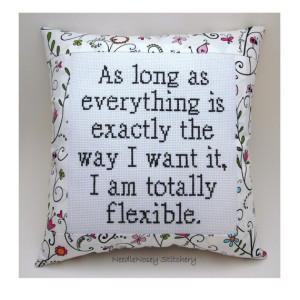 2. Let-go of your need for control
2. Let-go of your need for control
Be willing to give up your need to always control everything that happens to you and around you – situations, events, people, etc.
Whether it is your loved ones, coworkers, customers, suppliers or just strangers you meet on the street – just allow them to be.
Allow everything and everyone to be just as they are and you will see how much better will that make you feel.
If this is hard for you, just remember that the world will not stop when you are dead and gone, which means that life will go on without you, so why not let it flow and go even when you are here.
3. Let-go of your limiting beliefs
You were born with unlimited potential. Science proves again and again that we, human only use, maybe 10% of our potential.
How about you let go of those limiting believes you have about what you can or cannot do, about what is possible or impossible.
From now on, you are no longer going to allow your limiting beliefs to keep you stuck in the wrong place.Spread your wings and fly!
4. Let-go of blaming
Let-go of your need to blame others for what you have or not done, for what you feel or don’t feel.
Stop giving your powers away and start taking responsibility for your life.
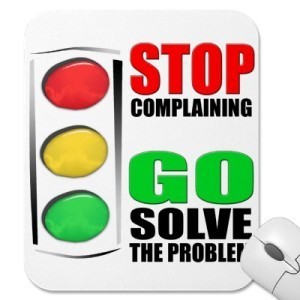 5. Let-go of complaining
5. Let-go of complaining
Give up your constant need to complain about those many, many, many things – people, situations, events that make you unhappy, sad and depressed.
Nobody can make you unhappy, no situation can make you sad or miserable unless you allow it to.
It’s not the situation that triggers those feelings in you, but how you choose to look at it.
Complaining means you are a victim of the circumstances or of those people.
Reclaim your power and take actions to change those events, circumstances that you do not like instead of complaining.
6. Let-go of your excuses
The need to prove you are right always shows up as the need to give excuses.
Send them packing and tell them they’re fired. You no longer need them.
Many of your excuses are only limiting and making yourself small, instead of growing and working on improving yourself and your life.
Excuses will allow you to get stuck, and in many cases those excuses are not even real.
Let go of your excuses for playing it small and let yourself SHINE and live in your GREATNESS.
 7. Let-go of your past
7. Let-go of your past
Your past is not equal your future. If we would be stuck in the belief that the past is equal our future the earth would be flat!
I know you’ve tried things in the past, I know you might have failed in the past, but that does not mean it would be your future!
In order to create the life you wish, in order to have the success you dream about you’ll need to let go of your past… even when your past was a GOOD one!
I know, I know. It’s hard. Especially when the past looks so much better than the present and the future looks so frightening, but you have to take into consideration the fact that the present moment is all you have and all you will ever have.
Stop deluding yourself. Be present in everything you do and enjoy life.
After all life is a journey not a destination.
Have a clear vision for the future, prepare yourself, but always be present in the now.
 8. Let-go of your resistance to change
8. Let-go of your resistance to change
The only thing in life, which is permanent, is… CHANGE.
Change is good. Change will help you move from A to B. Change will help you make improvements in your life and also the lives of those around you.
The more you resist change, the more you resist progress and the flow of life, which will create suffering and pain in your life.
Learn to embrace change – don’t resist it.
9. Let-go of people that don’t support you
As time goes by people change. People that have been there to support you at a certain period of your life, might not be as supporting to the person that you are today.
Have the courage to let go of those people that do not support you in your journey anymore.
Allow only positive and uplifting people into your life. Let-go of toxic people who lower down your energy.
Sometimes, it might be clients that are not your ideal clients, sometimes it might be friends that “do not get you anymore” and sometimes it might be even loved ones that you will have to limit your time with as they do not uplift you.
Make sure you surround yourself with positive people, those that are not… let them go!
10. Let-go of living your life up other people’s expectations
Stop living your life according to what other people expect of you.
Stop living up to what you think others want you to do, whether it is your friends, your enemies, your teachers, your government or the media.
Stop ignoring your inner voice, your inner calling. Stop being busy with pleasing everybody, and living up to their expectations.
You have one life – this one right now – you must live it, own it, and especially don’t let other people’s opinions distract you from your path.
Now I’m curious….
What do you have to let-go in order to be successful and happy in life?
Share it with us in the comment box below - your tips, advice and experience how you’ve learned to let-go
As a thank-you gift for your comment I will send you a video with a simple tip on how to let-go of things you don’t need anymore .
If you find this article inspiring, please SHARE it on Facebook, LinkedIn or retweet it, by pushing the button on the left, for the right channel, so more women could benefit from it.
Please share this article with your:
- LinkedIn connections
and blog readers...
Have a magical week! Vered
May 13, 2014
5 Steps to Improve Your Sales Communication
 No matter how good is your product or service, if you can’t transfer the value it has to your potential customers, they will never experience what you have created.
No matter how good is your product or service, if you can’t transfer the value it has to your potential customers, they will never experience what you have created.
This is why your communication is crucial if you wish to create any difference in your clients lives and more important for you business success.
This where the sale part of your communication needs to comes in.
I KNOW, I can already hear you… “I hate selling…”; “I don’t like to sell myself or my product”, “I feel cheap when I have to sell my service/product…” and the ultimate one is… “if my service / product are good they will come to me…”
All this is good and true if you live only in one country in the world… La-La Land!
In any other country in the world you will have to dedicate time and energy in forming and writing your sale page, or sale letter.
I believe that if you truly have a GREAT (not good, but GREAT) product and service it is your MORAL obligation to make sure that people would know about it.
It is your moral obligation to make sure that potential customers would understand and want to experience your product/service.
Think about it – if you had the cure for cancer would you have any hesitations to communicate about it any place to any person that you heard has cancer? I bet your answer is – NO
Therefore it is the same with your product and service if it solves a problem that your potential clients are suffering from.
By the way – if your product/service does not solve a problem… then change your product/service; there is no real use for it, unless it solves a problem. There is no way you will be successful if it does not solve a problem.
The only way they would be able to do it is if you dedicate time to learn how to communicate in a way that your customers would understand the value that you can give them.
Here are some 5 steps how you can improve your communicate to your prospects (potential clients):
 Step 1 – Hook them
Step 1 – Hook them
Use the customer’s words, not yours, to describe their problem
You know what it’s like when you’re reading something and you realize, “Whoa, this describes me to a T.”
Seeing yourself in the text compels you to read further. Maybe pass it along to a friend. Maybe share it with all of your friends.
We like content that feels tailored for us. We want our opinions to be validated (or changed through education) by what we read.
The best way to keep a potential customer from immediately exiting the page is to talk about them, not you.
A good mental check is to look at how many times you use the word “you” instead of “I” or “we.”
 Step 2 – Build-it-up
Step 2 – Build-it-up
Be transparent about your product’s R&D
Your first instinct when you’ve worked really hard on a product might be to hide all of the work it took to get there.
You want customers to feel like it just magically appeared for them, right?
Wrong.
People like to hear about the work you put into the thing they’re about to open their wallets for.
Think about it. As a customer, how does it make you feel to know that someone spent hundreds of hours crafting the class you’re about to pay for?
That your car was crash-tested in thousands of scenarios?
That each and every piece of your pasta was shaped by hand?
Time invested in a product signifies quality. When you give to your customers, they want to give back to you. By investing in each other, it also helps build a two-way relationship of trust.
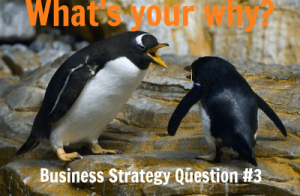 Step 3 – Show them the WHY
Step 3 – Show them the WHY
Every great company has a great WHY.
The reason Apple is welling so easily is because it has a great WHY (Think Differently).
The reason Google was able to takeover all other search engines, was not juts because they has a better algorithm for search, but because they had a huge WHY (Make information available for everyone).
Same thing for you and your product and service. You need to show your customers the end results that you want to take them to. It is not about the product or the service; it is about what it would create in their lives.
Don’t try to invent the wheel, remember the rule of K.I.S.S. – boil down your company to something everyone can agree on.
 Step 4 – Give them the solution
Step 4 – Give them the solution
Use specific and measurable terms to describe your solution
Do you remember that, you want your customers to read a description of their problem and think “Whoa, they’re talking about me”?
You want the same thing with a description of the solution.
Use the customer’s language to describe the solution. If you don’t know what their language is, identify some potential customers and ask them to describe their ideal solution.
Pay attention to the specific words they use, and then use them in your sales copy.
The other part of this is to be as measurable as possible with your solution.
Promising someone they’ll earn “more money” is less convincing than promising they’ll earn an extra $1000 per month starting in 3 weeks.
They have something to hold you to, and that accountability helps build trust.
Using specific numbers also suggests you’ve done this once or twice before, so you’ve seen it work with other customers to the extent that you can predict effects.
If you don’t have metrics to stand behind, at least use numbers wherever you can to build a more concrete picture. For example, “monthly five-figure income with zero management” is better than “make money on your own.”
 Step 5 – Call-To-Action
Step 5 – Call-To-Action
Tell them what you want them to do
I think this strategy is often overlooked, probably, due to your fear of “selling” and maybe looked as “pushy”.
However, call for action can be anything from “download your gift PDF, by clicking on the button below”, to “Please share this article with your friends on Facebook, LinkedIn and Twitter”, to “Click here to purchase your 30-day trail model” etc….
Anything that would show that they were interested and hooked on what you have to offer them.
Now it’s your turn….
What have you found out that works for you in getting your prospects buy from you?
Share it with us in the comment box below - your tips, advice and experience when it comes to sales communication, what works and what not
As a thank-you gift for your comment I will send you a video from “Mistakes Women Make with Money” seminar .
If you find this article inspiring, please SHARE it on Facebook, LinkedIn or retweet it, by pushing the button on the left, for the right channel, so more women could benefit from it.
Please share this article with your:
- LinkedIn connections
and blog readers...
Have a magical week! Vered



